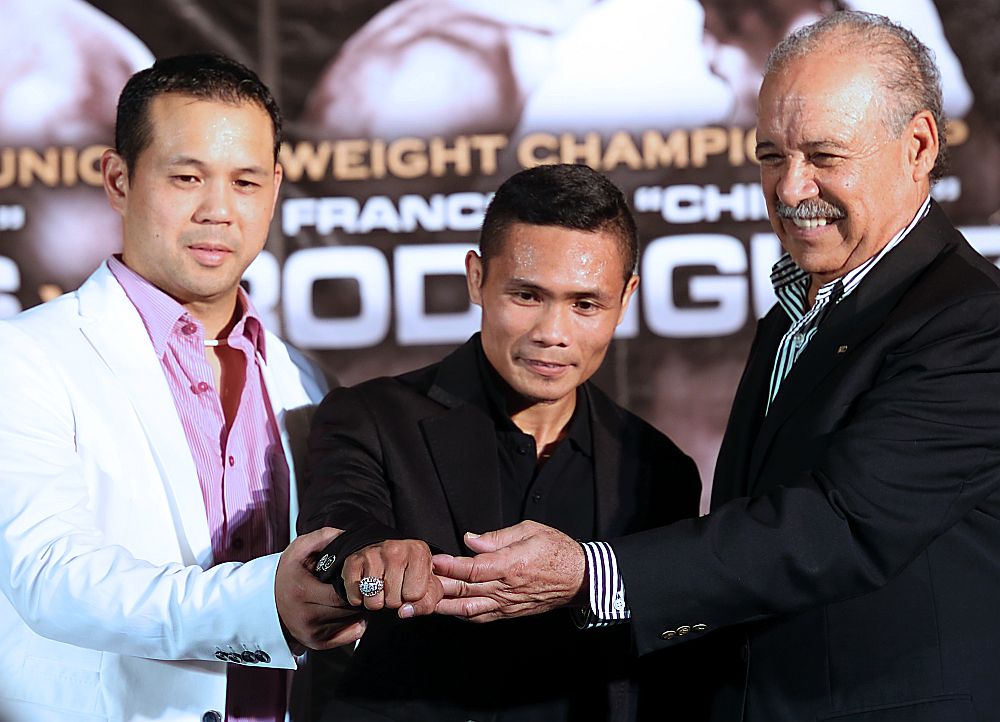
The Amazing Growth Of The WBO In The Asia-Pacific Region

From modest beginnings, the World Boxing Organization (WBO) has become a major force in the sport of boxing.
When the WBO was established in 1988, it did not envision an organization concentrated only in the established boxing territories of that era. Big fights were limited in rich countries like the United States, United Kingdom and Germany and in traditional boxing powers like Mexico, Puerto Rico, Argentina and Panama.
Boxing outside these countries were either content in staging small scale boxing shows; big events happened few and far in between. Hence, one of the visions of the WBO was to reach all boxing personalities in every corner of the planet. It also had a goal of giving equal opportunity to all boxers, managers, and promoters from all countries to showcase their brand of boxing for the whole world to see.
Sometime during the remaining years of the 20th century, WBO President Francisco “Paco” Valcarcel established the WBO Asia Pacific wing and appointed Leon Panoncillo of Hawaii, U.S.A to lead the new regional hub. Mr. Valcarcel envisioned that the biggest region on the planet in terms of land mass contain “hidden treasures” waiting to be discovered.
Panoncillo faced a ton of challenges when he started his office in Bangkok, Thailand. There were already established regional groups like the PABA of the WBA and the OPBF of the WBC which had existing relationships with Asia-Pacific promoters. There were countries like Japan for example, whose JBC, only recognized the WBA and WBC and would not allow licensed promoters, managers and boxers to participate in any boxing matches outside of the two organizations. Professional boxing was also banned during that time, in China, the biggest country in the region. There were also problems with sponsorship, boxing had to compete with the more established sports like football and basketball for airtime on television.
With the odds stacked against him, Panoncillo did not lose hope. He continued to work hard to achieve the vision of the WBO and its President.
The first recorded WBO Asia-Pacific title fight happened in 1995 with Australian Jack Russel fighting Filipino Ramon Algora in Queensland, Australia for the vacant WBO Asia Pacific light flyweight title. There were no more WBO regional bouts that year. In 1997, there were four, only two in 1998 and one in 1999 and 2000. The outlook seemed bleak.
But when the new century unfolded, the WBO Asia Pacific was able to sanction a total of 11 fights in 2001,doubling in 2002 and 42 total bouts in the next two years.
The organization hit a milestone in 2004 with the staging of the first WBO world title fight in Thailand. The Asia Pacific champion Ratanachai Sor Vorapin dethroned Cruz Carbajal for the WBO bantamweight world crown.
In 2007, Donnie Nietes would win the vacant WBO world minimumweight title in Cebu City, Philippines. Nietes was also a reigning WBO Asia Pacific titlist.
In 2007, Leon Panoncillo opened another regional title, the WBO Oriental belt. There was a growing demand from Asian promoters for WBO titles. In 2008, WBO Oriental and Asia Pacific belts combined for 53 total bouts, increasing to 56 in 2009 and 59 in 2010.
In 2012, Panoncillo, upon the approval of the WBO Executive Board, opened the new WBO international title. Elite and very popular boxers like Manny Pacquiao, Juan Manuel Marquez, Zou Shiming, Tyson Fury held this prestigious title.
This led to the creation of the WBO Asia Pacific Youth, WBO Asia Pacific female and WBO China national belts. Due to the increasing credibility in the region, Japan recognized the WBO in 2013. The JBC allowed their boxers to compete for WBO titles and produced three world champs – Katsunari Takayama, Naoya Inoue and Kosie Tanaka, who won in their home country.
The goal of Paco Valcarcel was achieved. Big time boxing landed in Asia.
In 2013, Top Rank Promotions, in coordination with the Chinese Sports outfit SECA, brought big time boxing to Macau and was televised on HBO. The event showed WBO world title fights. Asia was now the latest professional boxing frontier.
When it rains, it pours: The Comminist Party of China lifted their ban on pro boxing. The Professional Boxing Commission (PBC) of China was born. This new organization patterned their rules and regulations from the Association of Boxing Commissions (ABC).
The PBC is composed of their President Han Jian Ping (Shanghai), Secretary General Iu Kin Hang (Macau) and Executive Secretary Wei Na (Beijing). Since the historic partnership of Top Rank and Seca, the PBC of China has licensed and regulated a total of 13 boxing events in Macau.
There are also four other promoters in China who are promoting WBO title bouts which broadened the scope of the organization inside the most populous nation on earth.
Last September 5, Top and SECA launched the LEAGUE OF FISTS, a grassroots boxing program with at least 80 Chinese boxers in ten weight categories. It will produce 224 bouts, 40 fights every month with the goal of producing 10 WBO Greater China champions.
With China becoming a huge professional boxing market, the future of the WBO Asia Pacific is looking very bright.
Since November 2014, the WBO International, WBO Asia Pacific, WBO Asia Pacific Youth, WBO Asia Pacific female, WBO China National and WBO Oriental have produced a total of 88 title fights. This produced sky rocketing revenues for the WBO, more than what was expected.
Recently, boxing activity in countries like South Korea and Indonesia have been revitalized. There is also the continued strong presence of the WBO Asia Pacific in Thailand and the Philippines with their world champions, Pungluang Sor Singyu and Donnie Nietes, respectively.
IS THE WBO ASIA PACIFIC NOW AT IT’S PEAK?
NO, IT IS JUST GETTING STARTED AND THE BEST IS YET TO COME.
PhilBoxing.com
http://philboxing.com/news/story-112745.html
http://philboxing.com/news/story-112745.html